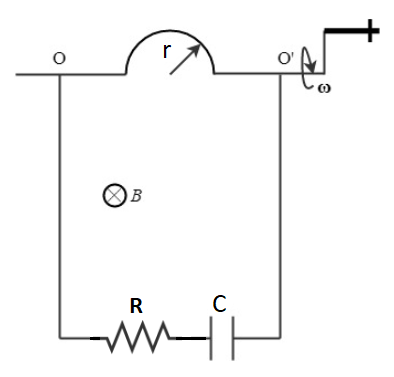Crank Generator Power
A conducting rod is bent in the shape of a semicircle of radius and the straight parts along the ends of the diameter of the semicircle are passed through fixed, smooth conducting rings and A capacitor with capacitance is connected to the rings with the help of ideal wires. A resistance is in series with the capacitor. The system is placed in a uniform magnetic field of strength such that the axis of rotation is perpendicular to the direction of the magnetic field.
The semicircle is now rotated about the axis with a constant angular velocity of . Neglect any self-inductance in the circuit.
What is the average mechanical input power (in Watts) required to keep the semicircle rotating?
Details and Assumptions:
- Assume AC steady-state operation

The answer is 1402.69.
This section requires Javascript.
You are seeing this because something didn't load right. We suggest you, (a) try
refreshing the page, (b) enabling javascript if it is disabled on your browser and,
finally, (c)
loading the
non-javascript version of this page
. We're sorry about the hassle.
From the solution to the previous problem, the induced voltage is:
V ( t ) = − 2 π ω B R 2 s i n ( ω t )
The RMS voltage is:
V r m s = 2 2 π ω B R 2
The capacitive reactance is:
X C = ω C 1 = 2 1
The impedance magnitude is:
Z = R 2 + X C 2
Current magnitude:
I r m s = Z V r m s
The capacitor contributes nothing to the average power. Only the resistive term matters. P a v = I r m s 2 R = 1 4 0 2 . 6 9